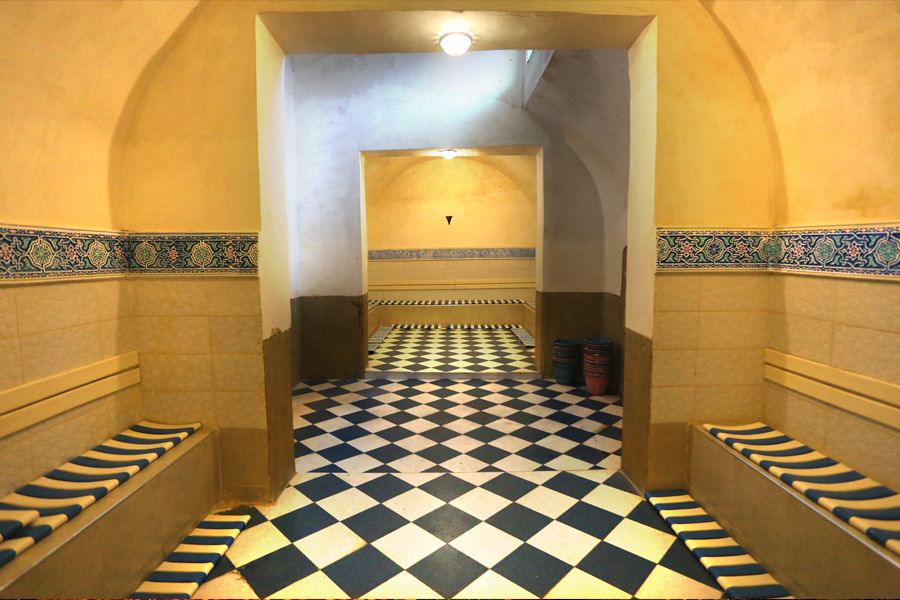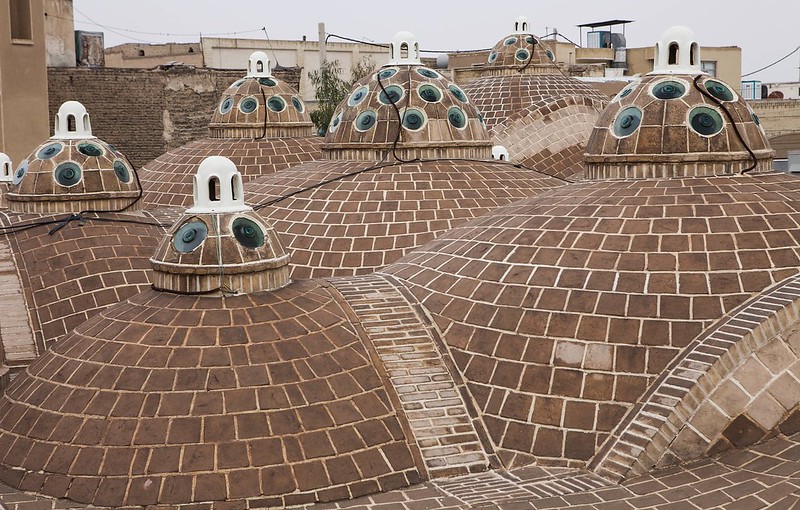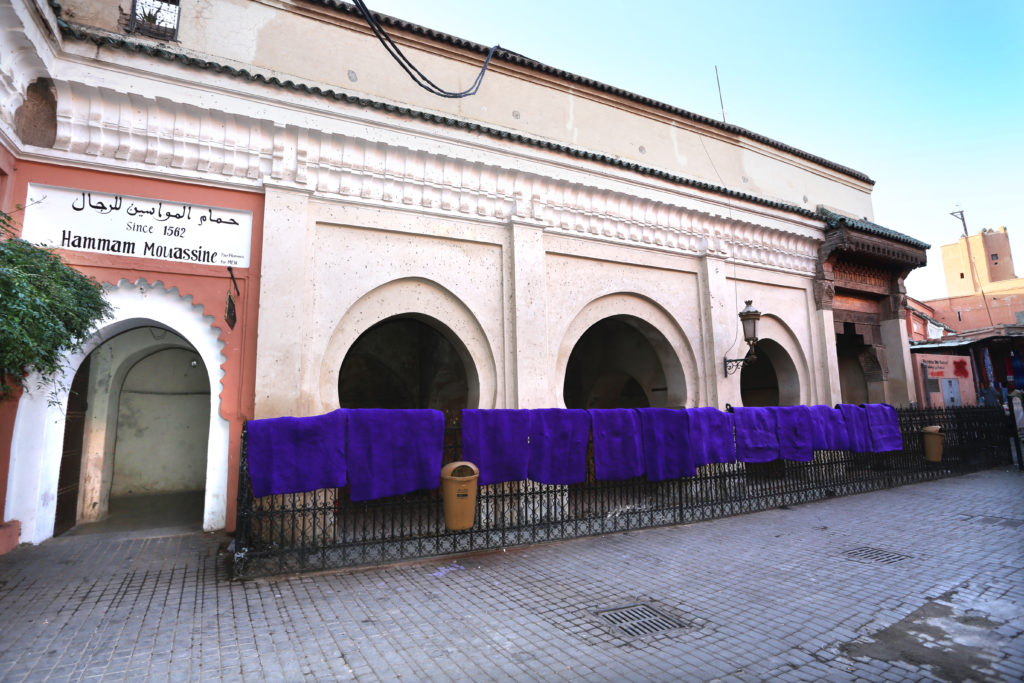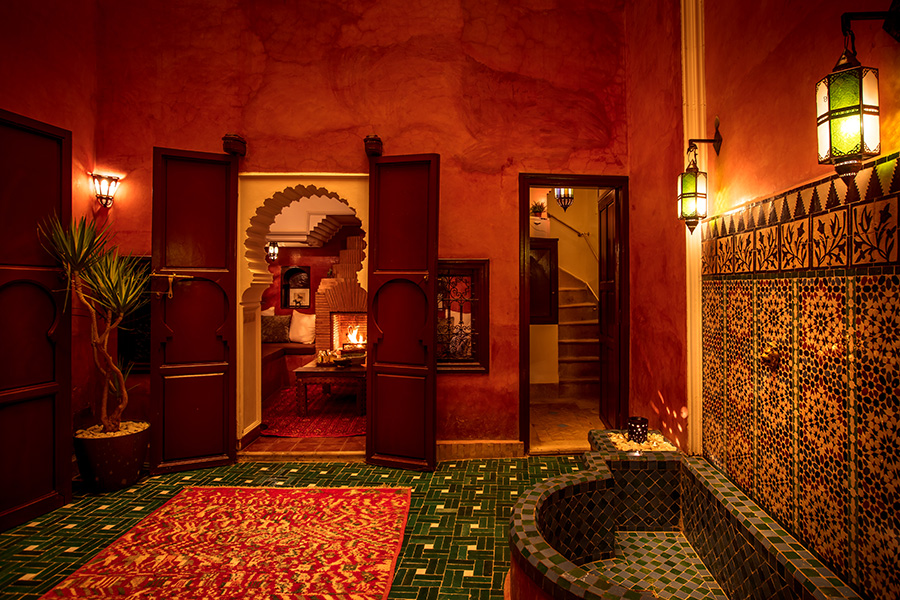Visiting a Moroccan hammam is a highly sought-after experience in Marrakesh. Inside the hammam, bathers take part in a relaxing, cleansing ritual, made up of many elements that combine to make a top cultural and social experience.
Traditionally, almost every community had a hammam; this is where locals would socialise and bathe in a manner that harmonised with religious practices. The importance of cleanliness to locals’ religion meant that these independent bathhouses would often be located near mosques in order to offer a means of purification prior to prayer. Nowadays they continue to form a lively social locus in many neighbourhoods.
Hammams have come to signify the ultimate cleansing ritual: an experience of relaxation that leaves the skin rejuvenated, muscles restored and the mind reset. Guests to a traditional Moroccan hammam can expect these benefits, but with the additional authentic cultural touches that come from experiencing the ritual on its home soil. A staple of Moroccan life, hammams are easy to find in Marrakesh. Across the city, they might take the form of independent wash houses, be situated within guest houses or hotels, or be part of a luxurious spa.
Basics of the Hammam
The connection between hammams and Islam leads to a ritual-like performance of cleansing procedures within these wash houses. Hammams themselves are often segregated by gender, with some designating specific days, or hours, to men and women. Inside you can expect to find a network of marble or stone-paved rooms.
The first room of the hammam is similar in style to an entrance hall and functions as a changing room. At this point, many tourists will often opt to wear swimsuits but locals are likely to strip-down completely, though women might be expected to wear underwear or offered an alternative by the hammam. It’s best to check with the locals or those at the entrance what the norm is for the particular hammam you decide to visit.
From here, depending on the style of the bath, you might collect a couple of buckets, your soap or cleansing materials and proceed to the heart of the hammam. The heat gradually increases in the dome-shaped steam rooms that ensue. These rooms operate at very hot temperatures in order to open the pores of your skin. Within this part of hammams, masseurs, or yourself depending on where you are, wash your skin. This process begins with an intense scrub using the traditional black olive paste soap and is followed by the rinsing away of the dead skin.
Bowls are filled with clean water that is poured over the body before guests receive a second scrub with a rough cleansing glove and the ritual is finished with the final rinse, often with cold water in order to provide an invigorating end to the experience. You may also find the final room in the bathing complex is a cold room designed for relaxation prior to departure. Here guests lie down, hydrate and unwind.
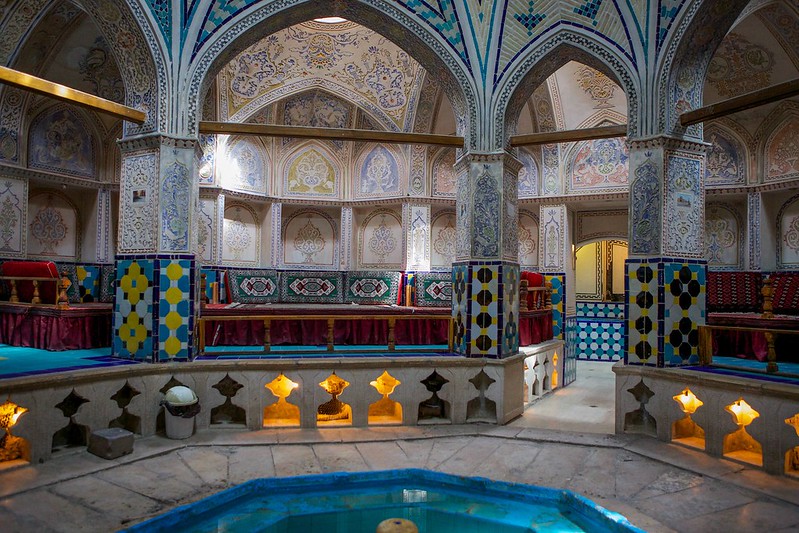
Different countries have their own style and ritual of hammams (Photo: Ninara via Flickr / CC BY 2.0)
The History of the Hammam
Roman baths inspired the hammams; as the Roman empire grew other cultures noted their customs and began to adopt their practices. The Arabic culture was one which empathised with the cleanliness at the heart of this routine and the limited plumbing infrastructure in Morocco resulted in the need for a communal bathing alternative. In order to integrate the baths with their Islamic religion’s rules, early proponents in Morocco adapted Roman baths into a unique style now known as hammams, with the word meaning the spreader of warmth.
The Moroccans, as well as others across the Middle East and North Africa, opted for smaller, more intimate bathing rooms rather than one large bath, as the Romans had used. Particular attention was paid to the process of purification; replacing the plunge pools and large baths with bowls and buckets filled with water that could be poured over the body instead, as they perceived the sharing of these bodies of water with disdain.
Nowadays, this style remains hugely popular across the Middle East and North Africa. Two of the most popular are the Turkish bath and the Moroccan hammam, with key differences existing between them: the Turkish bath relies on hot water running through the baths rather than the steam that fills the Moroccan bathing complexes. Hammams also use key techniques and materials from Moroccan culture that are not included in Turkish baths: exfoliating practices, the application of traditional black soap, local to Morocco, and bathing in cold water.
The hammam is considered to be one of five important elements found in every neighbourhood in Morocco, along with a communal bakery, a fountain, a school and a mosque. In order to conserve heat, traditionally the bakery and the hammam would be located next to one another.
In Marrakesh, the popularity of the hammams amongst locals and tourists means that there is a variety of experiences on offer, depending on what you are looking for and your budget. Public hammams offer a more authentic experience, mixing with locals who are attending as part of their routine, whilst private spas offer a more luxurious take on the hammam ritual. Here are some of the best.
Hammam Mouassine (Rue Sidi el Yamani) dates back to 1562, making it one of the oldest hammams in Marrakesh. Found in the Mouassine district of the city, this hammam’s age and architecture lead to a particularly traditional experience. Guests have the opportunity to pay the basic entrance fee and enjoy a classic hammam experience, or for an additional fee, be attended to by the hammam’s professional staff and enjoy a clay scrub using Morocco’s native rhassoul clay.
To rub shoulders with the locals, head to the public hammam, Hammam Dar el-Bacha (20 Rue Lalla Fatima Zahra). This is one of the largest hammams in Marrakesh, where you purchase your soap and exfoliation glove at the entrance and then relax with residents going about their daily lives. At this hammam, entry hours are divided by gender, with men gaining access in the morning, and women heading to the complex in the afternoon and early evening. A popular spot for both locals and tourists, the surrounding domes and arches that lead to this hammam add to its authenticity and local vibe.
Les Bains de Marrakech (2 Derb Sedra) is a boutique spa in the central Kasbah district. Like many venues in the city centre, the discrete entrance underplays the luxurious interior and treatments on offer here. Les Bains was one of the city’s first private hammams, growing into a cornerstone of the city and expanding to develop its own range of spa products. Due to its popularity with tourists, it is recommended to book time at this hammam in advance.
The chaos of the surrounding medina disappears as soon as you step into the Hammam de la Rose (Route Sidi Abdelaziz). The private, stylish spa offers a variety of treatments alongside hammam packages, allowing you to enjoy the hammam at your leisure and add on any extra treatments or products depending on your budget.
Heritage Spa (40 Arset Aouzal Rd) is more luxurious, small enough to feel cosy but big enough to house a number of guests and offer a variety of treatments. The high-quality products here are completely natural and plant-based, linking Moroccan traditions with nature. In addition to the three variations of hammam that you’ll find here, the spa also offers different types of massages as well as waxing treatments, manicures and facials.
Inside a riad, a traditional Moroccan guest house, Hammam Rosa Bonheur’s (35 Derb El aarssa) hamman and treatment rooms are decorated with beautiful Moroccan tiles. Guests can opt for the classic hammam experience, or add on extra treatments to suit their budget here too. The riad is found in Marrakesh’s sprawling medina, with staff collecting guests for their day of relaxation to ensure they don’t get lost within the medina’s labyrinth.
If you are after a particularly special hamman experience, Le Bain Bleu (32 Derb Chorfa Lakbir) offers facials, manicures and pedicures as well as special couples’ hammam packages. At this riad, the spa and hammam are constructed of intimate patios, professional treatment rooms and subterranean steam rooms.
Royal Mansour (Rue Abou Abbas El Sebti) is likely the most luxurious and glamorous spa and hammam in Marrakesh. The spa isn’t just called ‘royal’ for no reason, it’s owned by the King of Morocco and is designed in the style of the royal palace. Lined with palm trees featuring relaxing gardens, this is the place for people looking to really spend top dollar for their experience.
Part of the historic five-star hotel La Mamounia Hotel, La Mamounia Spa (Avenue Bab Jdid) features a hammam, spa treatments and an outdoor swimming pool. Different treatments: facials, massages, saunas, even hair-styling, can be added to your hammam stay, as well as offers which grant access to the hotel’s restaurant and gym facilities.
